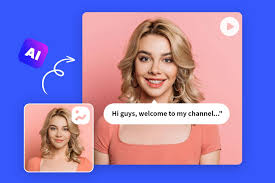That is why AI text-to-speech (TTS) characters bring a world of potential across industries, making them more and more in demand for varying uses. The latter is particularly beneficial in terms of cost-efficiency. For example, companies using AI TTS solutions saved 40% in voice production costs by the year 2023 especially for industries such as e-learning, customer service and gaming. The traditional manner of voice recording requires the hiring of professional actors, studio time and post production editing which can become astronomical in both cost and labor. AI-generated voices, on the other hand, produce high-quality audio instantly. This saves both time and money in production phases.
One reason also is customization which makes us to use AI TTS characters. They can customise the tone, pitch and speed of any context. These include not only industry terms like “voice modulation” and “prosody control,” but also intuitive understandings of how an AI voice can be fine-tuned to a particular requirement. For example, meditation apps might benefit from a soothing and relaxed tone whereas your marketing campaign would need something more lively. This flexibility enables brands to keep consistent messaging while servicing these platforms, eventually improving brand identity and fostering customer interaction.
Adoption — Extensibility is a strong pillar for adoption. AI TTS systems can create voices in many languages and accents, expanding global markets with little extra expense. A multinational company expanded into 15 new countries by using AI voices to localize their e-learning platform in just one year. Meanwhile, compared to localized content with traditional approaches for translation and voice-over which takes time to deliver — the rapid deployment saw an increase of 35% user engagement.

Real-world examplesRand: The flexibility on AI TTS characters The more recent example could be in 2021 whereby one of a major video game developers has used AI generated voices that allow for dynamic character interactions and it was able to cut the production timeline by half. With the aid of natural language processing (NLP), AI voices could refresh automatically alongside script changes or new content drops at a speed that most traditional methods would never be able to match. The news publication industry also started employing AI TTS for providing automated text to speech versions of articles, enabling their audience reach and improving accessibility.
Boosting Accessibility is Vital For The Technology AI voices make it possible for the visually impaired and those who learn better through hearing to access content. More than a billion people, according to the World Health Organization have some form of visual impairment signifying why making content accessible is important. AI TTS technology closes this gap by providing content in an interesting, human-like way which makes information more accessible to all.
The ethical dimension also applies to the proliferation of AI voices. As AI researcher Kate Crawford put it, “AI-generated voices have the potential to democratize content at a vast scale but only if given an ethical framework that respects privacy and consent.” This perspective is even more pertinent as AI TTS systems are used at a scale, warranting data privacy and content integrity.
By now, any one who knows AI voice platforms like ai text to speech characters, will greatly appreciate the function and customization of this technology across all manner of use case. AI voices are the scalable, versatile and cost-effective alternative for marketing, education or even entertainment — they represent a new frontier in digital communication.
So text-to-speech AI characters have excellent scalability, customizability for pure cost efficiency and followed by accessibility. As companies strive to make customer experiences more efficient and scale their voices, they will increasingly adopt this form of AI which promises an exciting glimpse into what the future holds for how we interact with digital content.